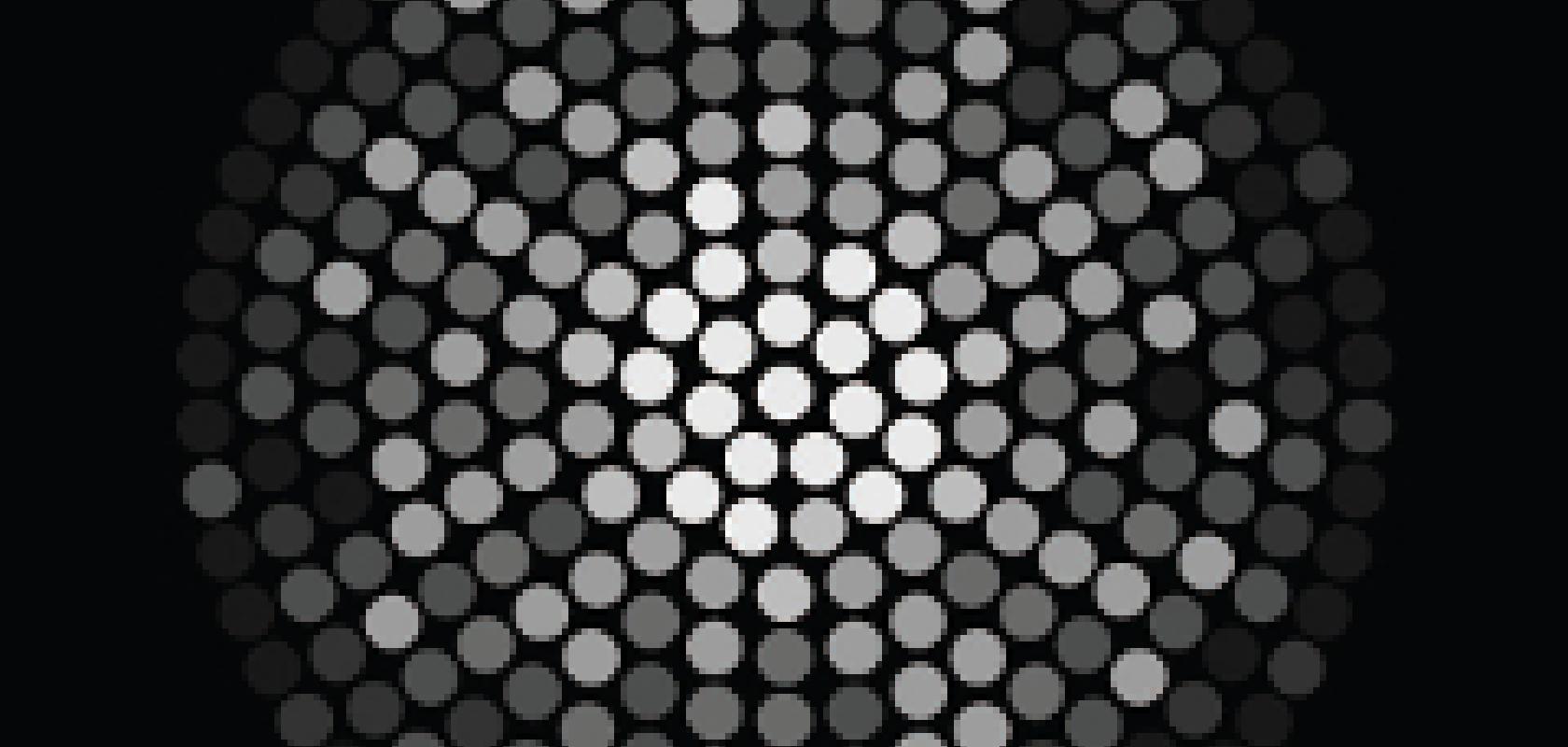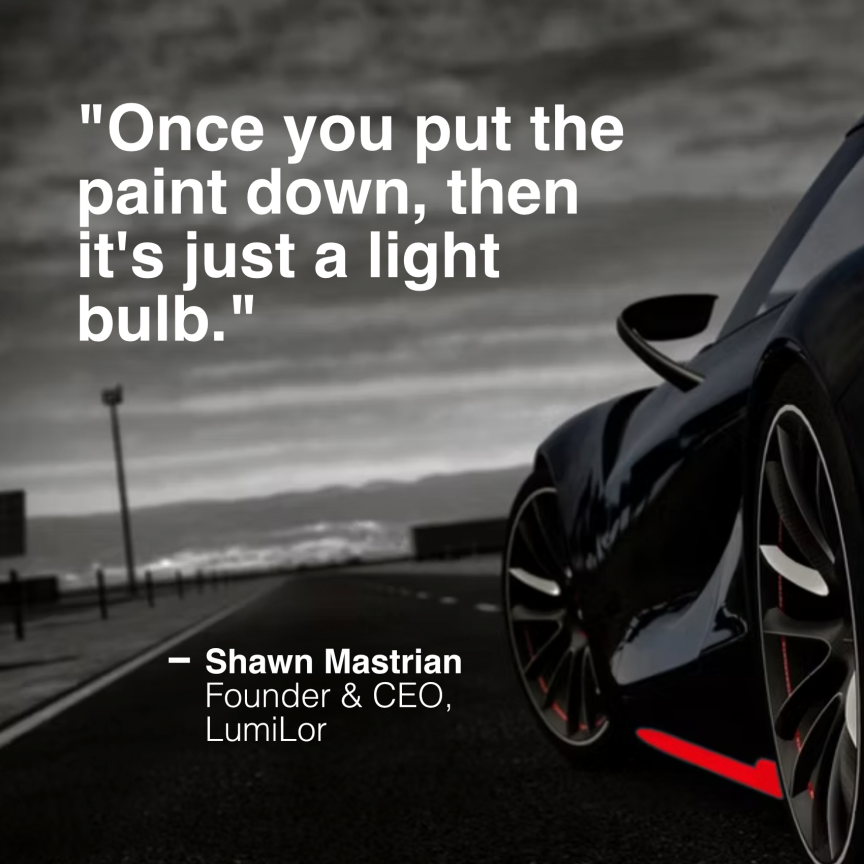LEDs might revolutionise the lighting industry, but lighting designers will have to get used to working with a light source that is fundamentally different from incandescent bulbs. Industry standards are in place for manufacturing and testing solid-state lighting and are constantly being revised, but work still needs to be done.
One of the areas where testing procedures are less well defined is in colour consistency, according to Thor Scordelis, manager of global product marketing at Xicato, a US-based producer of LED modules. Scordelis spoke on the subject of colour consistency and how it can affect lighting design at the Strategies in Light conference in Munich, Germany in November.
‘There needs to be a testing methodology that works for our [Xicato] remote phosphor system, for Philips’ phosphor-on-chip, and any of the other manufacturers’ technologies – something that all of the manufacturers would agree upon and that would be technically sound,’ he commented. He added though that it would be difficult to achieve, given that ‘each manufacturer uses different LEDs and different phosphors and they all behave differently’.
His presentation looked at the challenges involved when trying to maintain a certain lighting atmosphere in a space. Atmosphere through lighting is achieved with the colour temperature of the light source. However, in a building there might be multiple light sources – halogen, fluorescent and LEDs – which, even if they’re all specified to the same colour point, at 3,000K for instance, they’ll all look visually different because of the underlying spectral power distribution variations inherent in the different sources.
Multiple sources is one thing, but even working entirely with LEDs there will be variation in the spectrum from manufacturer to manufacturer, which will cause visual differences even at the same colour point.
This creates a problem for lighting designers. Scordelis said: ‘Designers often physically have to purchase the different sources and shine them on the wall to ensure they get the right effect. If manufacturers had very consistent sources and a full offering of colour temperatures, it would make the process of lighting design much easier.’
Colour consistency over time
Colour consistency is difficult to control. If either the light source or the luminaire is not designed properly or if the luminaire is placed in an installation operating at a different temperature, this can affect how consistent one source is compared to another. Variations can occur purely from the manufacturing process, but there can also be variation over time, which is an aspect of colour consistency Scordelis identifies as not yet being fully defined. ‘Application research needs to be carried out to determine what amount of shift over time is acceptable,’ he commented.
There are testing methods for lumen maintenance (namely the North American Illumination Engineering Society’s (IES) LM-80 procedure, which is typically used in both the USA and Europe), and there is also a method that gives guidance on how to project lumen maintenance over time (IES TM-21). However, a version of the TM-21 projection method does not exist for colour because colour has more variables – Scordelis noted that one method for Xicato may or may not work for Philips or GE, because the technology is different.
Xicato has its own internal colour consistency projection process. ‘We know the behaviour of our light source system from results made over the last five years, and we can predict how the light source will perform in the future with statistical methods and data from how it’s behaved in the past,’ commented Scordelis.
‘Colour will shift over time, no matter which manufacturer’s LED technology it is, but it is a matter of the level of shift,’ he stated. He said that the US Energy Star certification, which states an acceptable colour shift of seven standard deviations of colour matching (SDCM) over 6,000 hours, is too generous a standard. ‘That kind of shift is going to be visible to the human eye and people will complain about that,’ he commented. ‘The one piece of work that should occur is to see what is tolerable and reasonable over time, given that light sources will change.’
Xicato modules are made to tolerances less than 2 SDCM. The LEDs are matched in colour consistency, so if there is a slight shift it is relatively small to the eye because the LEDs start out so close together. Xicato modules are specified so that they won’t shift more than 3 SDCM over a 50,000 hour life.
The level of acceptable shift also depends on the application, as, generally, it is less important for colour to be consistent for outdoor lighting compared to indoor lighting. Luminaires placed next to each other for accent lighting on a wall should be at or less than 2 SDCM, noted Scordelis.
Accuracy-driven testing
The search for higher accuracies in classifying LED light output is driving the development of the test equipment needed to make these measurements, according to Dr Richard Young, chief scientist at Instrument Systems, which produces light measurement devices. Dr Young ran a workshop at the Strategies in Light conference on measurement standards for solid-state lighting.
‘People want to be able to get the correct colour spectrum out of these lamps, basically at the testing stage,’ he said. There’s a push to try and make sorting bins smaller so that LEDs can be matched more accurately to get the specified colour for luminaires. Aiming for higher accuracy means that testing equipment manufacturers are being ‘pushed to the very limit of what they can do in terms of calibration and maintenance of calibration of equipment’, remarked Young. ‘The manufacturers are saying “I need this performance”, so industry is creating a drive for higher accuracies and better testing equipment.’
Testing LED luminaires is different from testing incandescent bulbs because the spectrum is different and also the output of an LED is directly related to its temperature. The more LEDs that are packed together, the hotter they become and the less efficient. Putting ten 100-lumen LEDs in a fixture doesn’t equate to 1,000 lumens, noted Dr Gareth John, technical director at Photometric and Optical Testing Services. ‘You’d be lucky to get 800 lumens,’ he said.
Photometric and Optical Testing Services, based in Cheltenham, UK, provides photometric laboratory testing. It is the sister company to Pro-Lite Technology, which supplies optical testing equipment.
‘There’s a period of thermal stabilisation,’ added Dr John, ‘which for something like a downlight is between 45 minutes and an hour, and for a street light it can be 2.5 to 3 hours.’
All this has to be taken into consideration when designing a luminaire. Scordelis commented: ‘We could build the perfect LED module that is completely stable over lengthy periods of time, but a luminaire can fail very quickly if it’s not designed properly.’ Xicato runs a thermal validation programme, a warranty on colour shift predicated on the company having validated its customer’s luminaire.
Getting better all the time
Most manufacturers are aware of the testing procedures for solid-state lighting. The standards and documents from organisations like Energy Star in the US, which makes recommendations as to what is acceptable in terms of efficacy and colour, etc, and which manufacturers use as data to sell their luminaires, are ultimately improving LED technology. ‘The standards say this is what we’re aiming for, this is what you must produce, and lamps have got better,’ remarked Dr Young. ‘We can see the advantage of these standards already. They are improving the lamp quality and forcing manufacturers to make measurements and not make wild claims.’
However, he does identify that copy standards, i.e. a country or organisation adopting a standard but modifying it slightly, can be a problem for the industry. In recent years many of the Asian countries have made their own copies of US and European standards, for instance, but modified them for their specific requirements of language and conventions.
‘Copy standards, of which there are a lot, are a little bit of a problem for the industry in the sense that you have to make sure you obey the requirements of the country as well as international laws,’ Young commented. ‘And you never know whether or not there has been a change; you can’t assume one standard is simply a straight translation from another. But it’s better than having no standards at all.
‘There is huge activity and participation in writing these standards,’ he added. ‘Pretty much everywhere in the world is taking some form of interest in these standards.’
According to Dr Young, the tendency has been over the last decade to move away from simple photometers and colorimeters to more sophisticated spectroradiometers, for the higher end measurements at least. Measuring colour temperature, the colour difference, and the colour rendering index (CRI) all require a spectroradiometer.
‘Going back 10 years you’d hardly see a spectroradiometer in a lab making these measurements. Now it is very common,’ Young remarked. ‘In fact, some LED manufacturers do 100 per cent testing of LEDs using spectroradiometers. This requires a lot of spectroradiometers because they’re producing billions of LEDs.’
These measurements would generally be made in an integrating sphere, although this is not suitable for all types of lamp. A goniometer might also be used, which measures the distribution of light with respect to angle.
‘You’d need to know the direction of the light as well as how much there is of it to design a lamp to illuminate a specific area,’ said Young.
To manufacturers of lighting test equipment, such as Instrument Systems, the LED market is hugely important, noted Young. According to market research firm, IHS, unit sales of packaged LEDs for general lighting are set to triple from $3.6 billion this year to reach $7.1 billion in 2016. ‘The whole world relies on high efficiency light bulbs,’ he added. ‘Even if you’re not making them, you’re investing in them and your economy is looking forward to reaping benefits from them.’
 Greg Blackman is the editor for Electro Optics, Imaging & Machine Vision Europe and Laser Systems Europe.
Greg Blackman is the editor for Electro Optics, Imaging & Machine Vision Europe and Laser Systems Europe.
You can contact him at greg.blackman@europascience.com or on +44 (0) 1223 275 472.
Find us on Twitter at @ElectroOptics, @IMVEurope, and @LaserSystemsMag.


